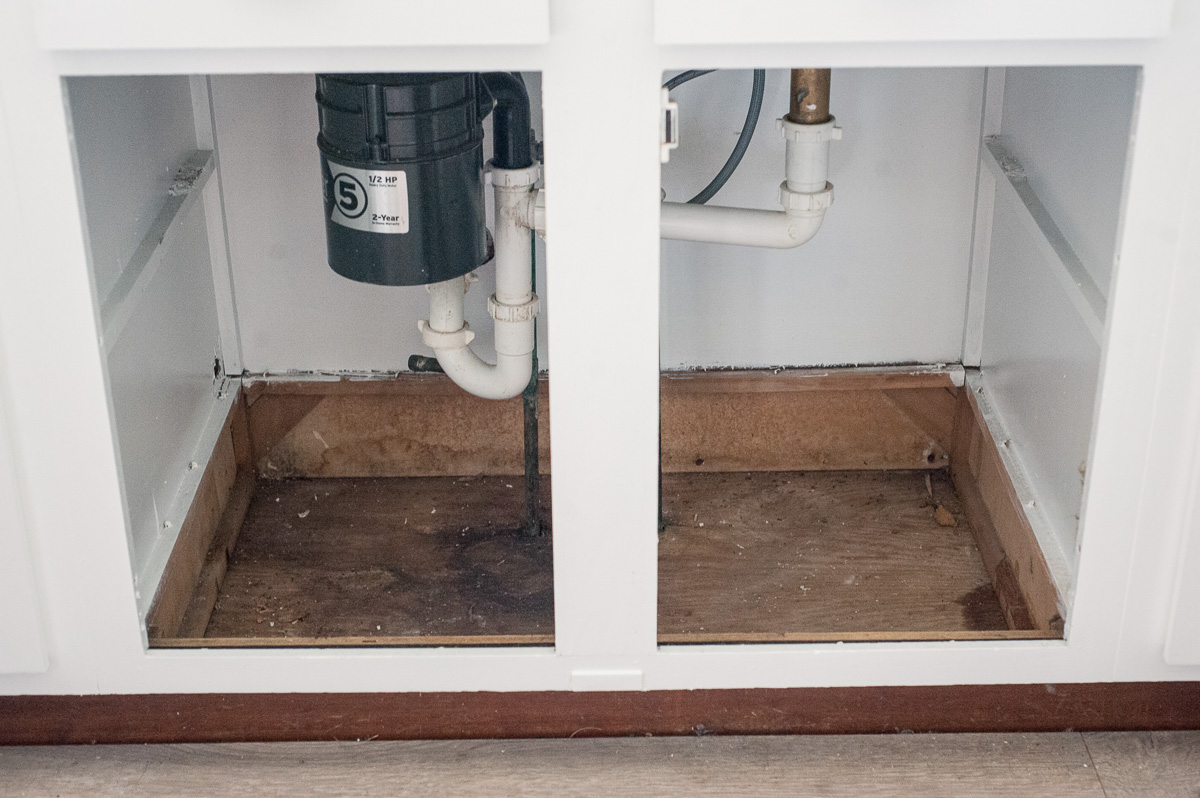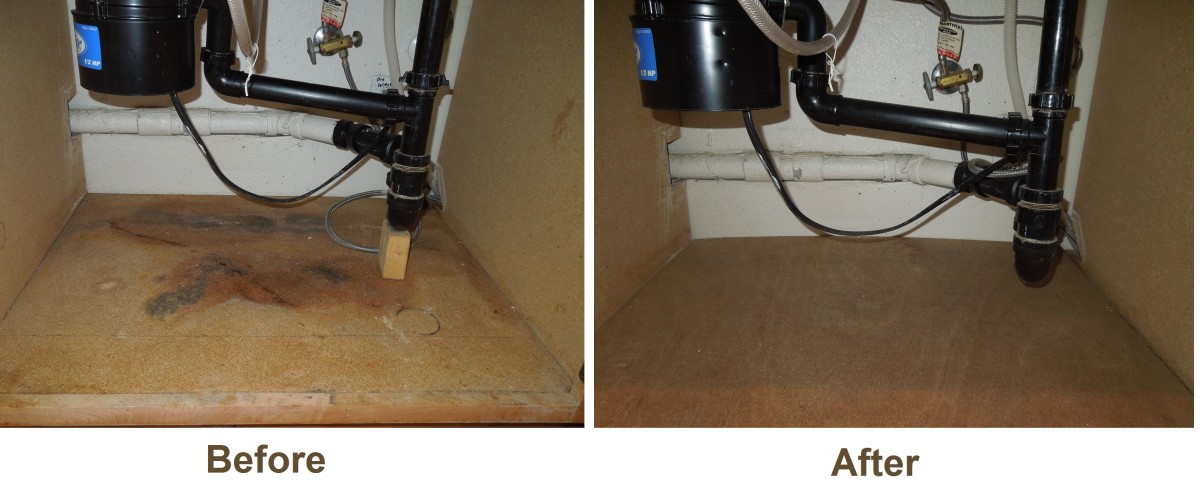Assessing the Damage and Gathering Supplies: How To Replace A Sink Cabinet Bottom

Replacing a sink cabinet bottom is a common DIY project that can save you money and enhance your kitchen’s functionality. This process usually becomes necessary due to water damage, wear and tear, or simply a desire to upgrade the cabinet’s appearance.
How to replace a sink cabinet bottom – The first step is to assess the extent of the damage and gather the necessary supplies. This includes determining the cause of the damage, which can help you prevent similar issues in the future.
Replacing a sink cabinet bottom often requires removing the sink and countertop, which can be a daunting task for a homeowner. However, if you’re looking for more affordable housing options, you might consider cheap one bedroom apartments in Jacksonville FL , where you might not have to worry about such repairs.
Once you’ve found a suitable apartment, you can focus on the smaller tasks, such as replacing a sink cabinet bottom, which can be tackled with a little DIY knowledge and the right tools.
Common Reasons for Replacing a Sink Cabinet Bottom
The most common reasons for needing to replace a sink cabinet bottom include:
- Water damage: Leaks from the sink or pipes can cause the bottom to rot, warp, or become moldy. This is often a result of a faulty faucet, leaky pipes, or a clogged drain.
- Wear and tear: Over time, the bottom can become weakened due to constant exposure to moisture and the weight of the sink and its contents.
- Upgrade: You might want to replace the bottom with a more durable or aesthetically pleasing material, such as plywood or solid wood.
Gathering the Necessary Supplies, How to replace a sink cabinet bottom
Before you begin the replacement process, gather the following tools and materials:
- Safety gear: Gloves, safety glasses, and a dust mask are essential for protecting yourself from potential hazards during the project.
- Tools: You will need a screwdriver, a hammer, a saw, a drill, and a measuring tape. A circular saw can be helpful for cutting large pieces of wood, but a hand saw will suffice for smaller pieces.
- Materials: The type of replacement material will depend on your needs and budget. Common options include plywood, solid wood, or a moisture-resistant material like marine plywood. You’ll also need screws, wood glue, and possibly wood filler or caulk to seal any gaps.
Safely Removing the Old Cabinet Bottom
To safely remove the old cabinet bottom, follow these steps:
- Empty the cabinet: Remove all items from the cabinet to prevent damage or injury during the removal process.
- Locate the screws: Identify the screws that hold the bottom in place. They are usually located on the sides or back of the cabinet.
- Remove the screws: Use a screwdriver to remove the screws that secure the bottom. Be careful not to damage the cabinet frame.
- Carefully remove the bottom: Once the screws are removed, gently lift the bottom out of the cabinet. Be cautious, as the bottom may be fragile and could break if not handled carefully.
Determining the Appropriate Size and Type of Replacement Material
The size and type of replacement material will depend on the dimensions of the original bottom and your desired level of durability. Consider these factors when making your selection:
- Size: Measure the length and width of the old bottom to ensure you purchase a replacement of the correct size.
- Thickness: Choose a thickness that is appropriate for the weight of the sink and its contents. Thicker material will be more durable but may require more effort to cut and install.
- Material: Plywood is a common and affordable choice for replacing cabinet bottoms. Solid wood is more expensive but provides greater durability and longevity. Consider using marine plywood for a moisture-resistant option.
Installing the New Cabinet Bottom

Replacing the bottom of a sink cabinet is a straightforward process, but it’s important to ensure the new bottom is properly fitted and securely attached for long-lasting durability.
Cutting and Fitting the New Cabinet Bottom
Before installing the new cabinet bottom, it’s crucial to ensure it’s the right size and shape. If necessary, you may need to cut the new bottom to fit the existing cabinet space.
- Measure the width and depth of the cabinet opening, taking into account any existing trim or molding.
- Use a saw, preferably a circular saw with a fine-tooth blade, to cut the new bottom to the exact dimensions.
- If needed, use a jigsaw to cut out any intricate shapes or curves required for the cabinet opening.
- Once the new bottom is cut, test-fit it in the cabinet opening to ensure it fits snugly and aligns with the existing sides and back.
Attaching the New Cabinet Bottom
Once the new cabinet bottom is cut and fitted, you can attach it to the cabinet using various methods.
- Screws: This is the most common method, especially for solid wood bottoms. Drill pilot holes slightly smaller than the screw size to prevent splitting the wood. Use screws that are long enough to penetrate the cabinet sides and back for secure attachment.
- Glue: For plywood or other thin materials, you can use construction adhesive to attach the new bottom. Apply a bead of glue along the edges of the new bottom and press it firmly into place. Use clamps to hold it in place while the glue dries.
- Combination of Screws and Glue: For added strength and stability, you can combine both screws and glue. This approach offers the best of both worlds, providing a secure and long-lasting bond.
Reinforcing the New Cabinet Bottom
To further enhance the strength and stability of the new cabinet bottom, you can consider these reinforcement techniques:
- Adding Braces: Install additional braces, such as wood strips or metal brackets, underneath the new bottom to distribute weight and prevent sagging.
- Using a Support Beam: For larger cabinets or heavier loads, consider adding a support beam across the width of the cabinet to provide extra reinforcement.
- Applying a Wood Filler: If the new bottom is thinner than the original, you can use a wood filler to create a smooth, even surface and strengthen the attachment points.
Ensuring Proper Alignment and Level
To ensure the new cabinet bottom is properly aligned and level, you can use a level and a measuring tape.
- Check that the new bottom is level in both directions using a level. Adjust the screws or shims as needed to achieve a level surface.
- Measure the distance from the new bottom to the existing cabinet sides and back to ensure consistency. Adjust the screws or shims as needed to ensure the new bottom is aligned with the existing cabinet frame.
Finishing Touches and Maintenance

Now that your new cabinet bottom is securely installed, it’s time to give it a final polish and ensure it’s protected for years to come. This section will guide you through the process of applying finishes, sealing the new bottom, and maintaining it to prevent future damage.
Applying Finishes
To seamlessly blend your new cabinet bottom with the existing cabinetry, you’ll need to match the finish. The specific steps will vary depending on the type of finish you’re working with, whether it’s paint, stain, or another material.
- Painting: For painted cabinets, you’ll need to use the same paint type and color as the existing cabinets. Before painting, clean the surface thoroughly with a damp cloth to remove any dust or debris. Apply a primer to the new cabinet bottom, and then apply two coats of paint, allowing each coat to dry completely before applying the next.
- Staining: If your cabinets are stained, you’ll need to use the same stain type and color. Before staining, sand the new cabinet bottom to create a smooth surface and allow the stain to penetrate evenly. Apply the stain in thin coats, following the manufacturer’s instructions.
- Other Finishes: For other finishes like laminates or veneers, you’ll need to match the existing material and use the appropriate adhesive and application techniques. Consult with a professional if you’re unsure about the best approach for your specific finish.
Sealing the Cabinet Bottom
Protecting the new cabinet bottom from water damage is crucial for its longevity.
- Water-Resistant Sealant: Apply a water-resistant sealant to the underside of the new cabinet bottom to prevent moisture from seeping in. This is particularly important in areas prone to spills or leaks, such as under the sink. Look for sealants specifically designed for wood or the material of your cabinet bottom.
- Regular Inspection: Regularly inspect the sealant for any signs of wear or damage. Reapply the sealant as needed to maintain a protective barrier.
Maintenance Tips
Following these simple tips can help you keep your new cabinet bottom looking its best and prevent future damage:
- Clean Regularly: Wipe down the cabinet bottom regularly with a damp cloth to remove dirt and grime. Avoid using harsh cleaners that can damage the finish.
- Prevent Water Damage: Be mindful of spills and leaks, and promptly clean up any moisture that gets on the cabinet bottom.
- Avoid Overloading: Avoid overloading the cabinet bottom with heavy items, as this can cause stress and lead to damage.
Common Mistakes to Avoid
Here are some common mistakes to avoid when replacing a sink cabinet bottom:
- Not Measuring Accurately: Measure the opening carefully before purchasing a new cabinet bottom to ensure a perfect fit.
- Using the Wrong Fasteners: Use the correct fasteners for your cabinet bottom and the surrounding structure.
- Skipping the Sealant: Don’t skip the step of applying a water-resistant sealant to the underside of the cabinet bottom.
Replacing a sink cabinet bottom often involves removing the sink and countertop to access the damaged section. This process highlights the importance of considering the overall cabinet structure, particularly when dealing with integrated sink designs. For those seeking a more unified approach, exploring kitchen cabinets with sink combo can offer a streamlined solution.
Such cabinets often come pre-equipped with a sink, eliminating the need for separate installation and potentially simplifying future repairs.